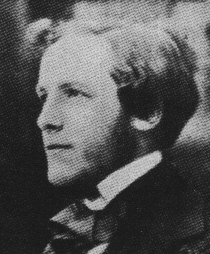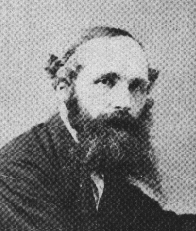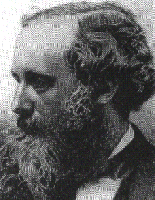


James Clerk Maxwell
1831-1879



James Clerk Maxwell
1831-1879
Scottish physicist, one of the top theoretical physicists of the nineteenth century. Grew up on family estate Glenlair near Dalbeattie, Scotland where he later did much of his scientific writing. Wrote first scientific paper at age 14 on the theory of ovals (Proceedings of the Royal Society of Edinburgh). Educated at Edinburgh 1847-50, Cambridge 1850-54. Elected Fellow of Trinity College, Cambridge, 1855. Professor at Marischal College, Aderdeen 1856-60, King's College, London, 1860-65. Appointed the first professor of experimental physics at Cambridge, 1871, organized and built the Cavendish Laboratory.
Early work on geometry, geometrical optics (e.g., Maxwell's "fish eye" lens), extensive experimental work on color vision (Maxwell's color disk), quantitative theory of color, primary colors. Adam's Prize for work on the theory of the rings of Saturn, 1859.
Did a great deal of work on the foundations of statistical physics. Developed the Maxwell velocity distribution in the kinetic theory of gases, 1859-60, did experiments on viscosities of gases, 1865, developed kinetic theory of viscosities and other transport phenomena, 1867. Studied elasticity of solids and other subjects in this period. Derived the Maxwell relations in thermodynamics, 1870.
Maxwell's most important work was the development of a mathematical description of electromagnetic phenomena. Developed the Maxwell equations to describe electromagnetic fields building on Faraday's field concept, introduced the displacement current to obtain consistency with charge conservation, demonstrated the theoretical existence of electromagnetic waves. Measured (with Hockin) the ratio of magnetic to electric forces, used the result to show that the constant in the theoretical wave equation was equal to the speed of light c, connected electromagnetic and light waves. Maxwell's five major papers on electromagnetic theory were published over the period 1856-68, with the ideas developed further in later work.